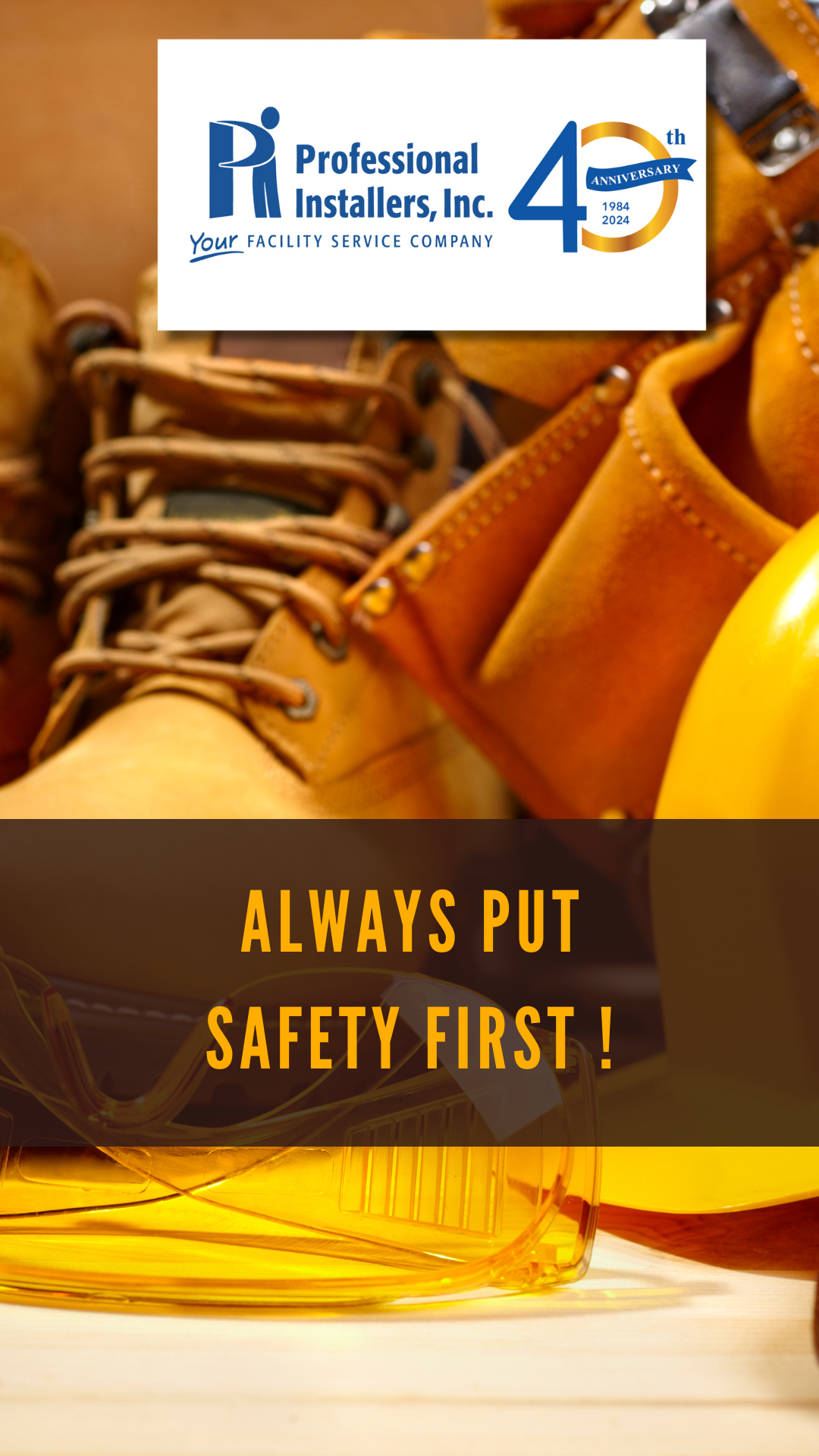pi-cmadmin posted on May 06, 2024 09:16
The week of May 6-10, 2024, is National Construction Safety Week. At Professional Installers, one of the benefits we see by being a member of the Facilities Service Network (an international consortium of independent furniture installation companies who share a common commitment to professionalism, best-practices, and high value customer experience), is learning from each other how to perform work in the safest manner possible.
 In any workplace, safety should always be the top priority. We all want to ensure our employees return home safely to their families every day. This principle especially holds true when it comes to office furniture installation. While the installation process may seem straightforward, it involves various tasks that, if NOT executed with caution, can lead to accidents and injuries. In this article, we explore some essential best practices from the top office furniture installation companies around the globe.
In any workplace, safety should always be the top priority. We all want to ensure our employees return home safely to their families every day. This principle especially holds true when it comes to office furniture installation. While the installation process may seem straightforward, it involves various tasks that, if NOT executed with caution, can lead to accidents and injuries. In this article, we explore some essential best practices from the top office furniture installation companies around the globe.
1. Conduct a Pre-Installation Safety Assessment
Before beginning any installation project, it's crucial to conduct a comprehensive safety assessment of the workspace. Identify potential hazards such as uneven flooring, overhead obstacles, or electrical outlets that may pose risks during installation. Addressing these hazards beforehand can help prevent accidents and ensure a smooth installation process.
2. Provide Proper Training for Installers
Proper training is essential for installers to understand the correct procedures and safety protocols involved in office furniture installation. Ensure that installers are trained in safe lifting techniques, use of equipment such as drills and power tools, and handling of heavy furniture components. Regular training sessions, certification by manufacturers, and refresher courses can help reinforce safety practices and minimize the risk of accidents.
3. Use Personal Protective Equipment (PPE)
Personal protective equipment (PPE) is a must-have for office furniture installation projects. Installers should wear appropriate PPE, including safety goggles, gloves, and steel-toed boots, to protect themselves from potential hazards such as flying debris, sharp edges, and heavy lifting. Providing and enforcing the use of PPE can significantly reduce the risk of injuries on the job.
4. Ensure Proper Ergonomics
Ergonomic principles should be integrated into office furniture installation to prevent musculoskeletal injuries and strains. Encourage installers to maintain proper posture, lift with their legs rather than their back, and take regular breaks to rest and stretch. Using ergonomic tools and equipment, such as lifting straps and adjustable workbenches, can also help minimize strain and fatigue during installation tasks.
5. Secure Heavy Furniture Safely
Heavy furniture components pose a significant risk during installation if not properly secured. Use appropriate lifting equipment, such as dollies or hand carts, to transport heavy items safely. Ensure that furniture pieces are securely anchored to the floor or wall to prevent tipping or instability. Additionally, use caution when maneuvering furniture through narrow doorways or tight spaces to avoid collisions and injuries.
6. Communicate Effectively with Team Members
Clear communication among team members is essential to ensure a safe and efficient office furniture installation process. Establish protocols for signaling and coordinating tasks to minimize the risk of accidents due to miscommunication or misunderstanding. Encourage open dialogue among installers to address safety concerns promptly and implement corrective actions as needed.
Conclusion
By prioritizing safety and adhering to best practices during office furniture installation, companies can create a workplace environment that is not only productive but also safe for everyone involved. Remember, safety should always come first—no installation is worth compromising the well-being of your team.